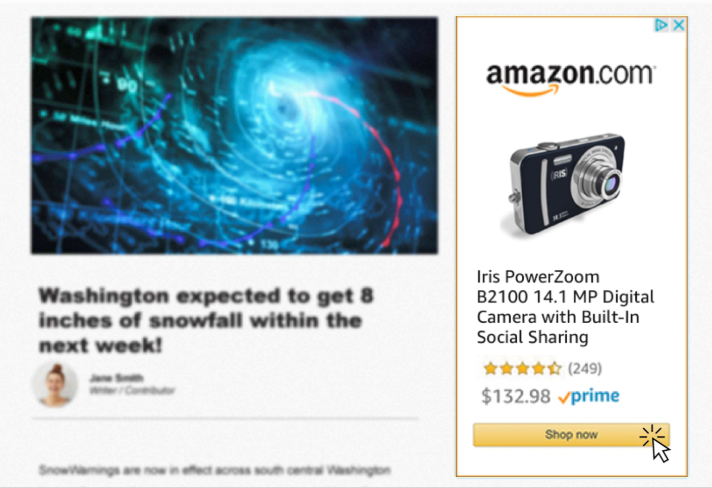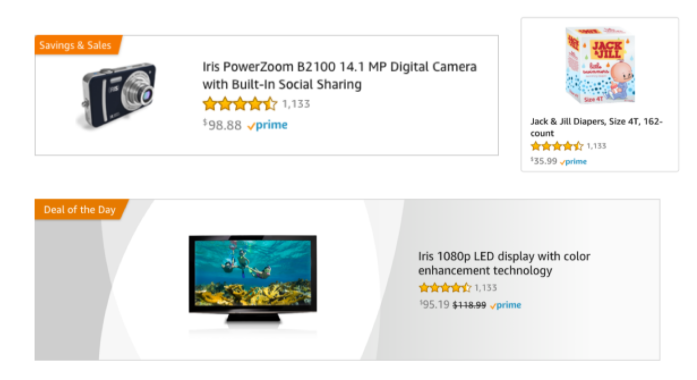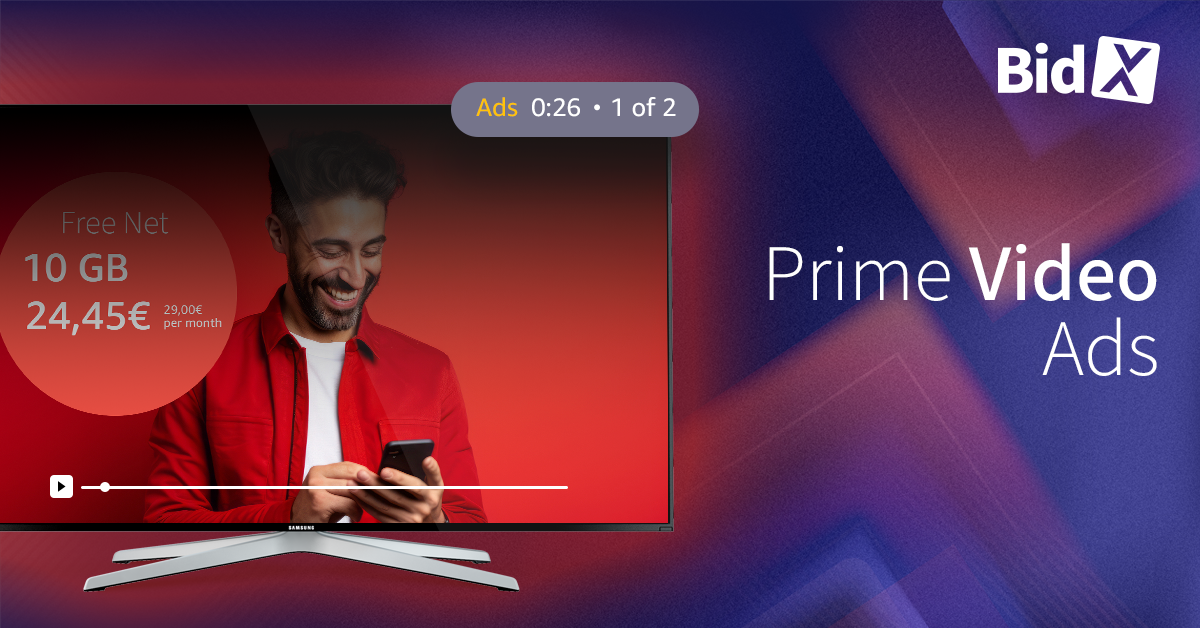Sponsored Display Ads: All you need to know
Amazon Sponsored Display Ads have been available for vendors and US sellers since the end of October 2019. The Product Display Ads have been completely replaced by this new advertising format. At the end of August 2020 the Sponsored Display Ads were rolled out for sellers (Amazon brand registry required) and the European marketplaces! Also sellers in India, Japan and Canada can access Sponsored Display.
In this article we give you all the important information about the Sponsored Display Ads and explain the difference to the former Product Display Ads as well as to the Dynamic eCommerce Ads, which seem to be similar at first glance and which can be booked via Amazon DSP for some time now.
The multifaceted advertising format
The Sponsored Display Ads are an advertising format that can be shown both on and off Amazon. Currently, there are three targeting options available, which are explained in more detail in the next paragraph. Depending on the placements, the ads can have different designs. They link to the product detail pages of the advertised products. Due to the different options in targeting, placement and design, Sponsored Display Ads are probably the most versatile format of Sponsored Ads on Amazon. They can be used to address customers at different stages of the purchase decision process.
Since 2022, there are also Sponsored Display Video Ads. With these videos, which can be up to 45 seconds long, you have the opportunity to increase the visibility of your brand and your products and present them through storytelling. You have 2 targeting strategies at your disposal - context targeting and audience targeting.
Sponsored Display - the new Product Display Ads?
The Product Display Ads (PDAs) are now part of the Sponsored Display Ads. The advertising format therefore continues to exist, only under a different name. The design and placement options below the Buy Box and under the attributes have remained unchanged. Thus, the own logo and a short text can still be integrated into the advertisement.

However, the Sponsored Display Ads give advertisers even more possibilities: They can also appear off Amazon. When displaying on external pages, the Amazon logo and a call-to-action (CTA) button in Amazon design are also added. The size of the ad can vary.

When and where will the ads be displayed?
As mentioned above, there are currently three targeting options with which the Sponsored Display Ads can be displayed.
- Views
Your ad will be displayed if potential customers have visited the product detail pages of your or similar products in the last 30 days but have not yet made a purchase. This is the principle of retargeting. The ad is shown off Amazon on external websites and apps.
This targeting option is great for customers who have a high purchase intention, because they have already searched for similar products.
The option is available for both vendors and sellers (Amazon brand registry required). - Products
Basically, this targeting works on the principle of Product Targeting, as is also known from Sponsored Product Ads. No keywords, but ASINs or categories can be selected.
The ads are placed on product detail pages (like the former Product Display Ads) and other Amazon pages. This allows you to target your ads to similar ASINS of the competition or relevant product categories. You can also target your own product detail pages if you offer complementary products to generate additional purchases and increase the shopping cart value.
This option is also available for both vendors and sellers (Amazon brand registry required). - Interests
Interest Targeting is suitable for increasing the awareness and recognition for your brand and products among your target group. If the search and purchase behavior of potential customers over the last 90 days indicates interest in product categories that include your advertised products, your ad will be displayed on product detail or search results pages on Amazon.
Interest Targeting is currently only available for vendors.
All three targeting variants are billed according to the CPC model and bid principle and not using a CPM model, as is usually the case with display ads.
With Sponsored Display Ads, Amazon offers the widest variety of targeting opportunities within one advertising format. According to Amazon, the special feature is that the search and buying behaviour of the customers is taken into account when an ad is displayed and that the ad can be shown on external sites. Depending on the "calculated" purchase probability of a potential buyer, bids from Amazon are also dynamically adjusted. As with Sponsored Product Ads, the maximum bid and the daily budget can be determined by the merchant.
Further benefits for Sponsored Display
Up to 10,000 ASINs can be advertised within a Sponsored Display campaign. Basically, several products in one campaign are not recommended. However, if there are many similar products with the same sales price, this will not have any negative effects and you will rather save time for controlling the ASINs.
Moreover the evaluation of the performance of your Sponsored Display Ads is possible in great detail. For example, you can see how many clicks and conversions you have generated with your ads on the targeted product detail pages - separately for each product detail page. This allows you to determine which ASINs you should focus on for your advertising in the future.
Another advantage of Sponsored Display Ads with Product Targeting is that the placement of the ads is automatically stopped if the advertised product is no longer in stock.
In addition, the ads with Product Targeting can also contain "badges" if the advertised product has them.

Difference to Dynamic eCommerce and Responsive eCommerce Ads
Dynamic eCommerce and Responsive eCommerce Ads are special forms of Display Ads and can be placed via the Amazon Demand Side Platform (DSP). The ad formats are continuously optimized and elements such as the title are automatically adjusted so that the respective campaign goal can be achieved. Both types support numerous rotating ad formats.
The choice of the respective creative is optimized by machine learning and the corresponding campaign goal. These goals can include, for example, increasing conversions or the click-through rate.
Both Dynamic eCommerce Creatives, and Responsive eCommerce Creatives include the primary product image of the promoted item's product detail page and a custom background.
Since the Responsive eCommerce Ads were introduced in 2021, the Dynamic eCommerce Ads are barely used. This is because with Responsive eCommerce Ads, sellers have some key advantages. The ad format allows you to create an ad automatically and include up to 20 ASINs per creative. In general, the creation of Responsive eCommerce Ads is much faster and less complicated than the creation of Dynamic eCommerce Ads.
The ads are continuously optimized so that the best performing products are selected for display. A big advantage of REC is that products that are out of stock are automatically detected and then not advertised further until the stock is replenished. Likewise, sellers can save themselves a lot of time with automatic resizing. This feature reduces the time needed to create ads by up to 90%.
Responsive eCommerce Ads also offer the possibility to advertise outside of Amazon. However, the creation is more complex than with Sponsored Display Ads.
A disadvantage of DEA and REC campaigns is that they are usually more expensive, since they are created via the Amazon DSP and the use of the Amazon Managed Service requires a minimum budget of approximately EUR 10,000 in the EU or USD 35,000 in the USA. External service providers, such as BidX, offer the use of the DSP for lower budgets. Please contact us for further information: DSP Request
Advantages of Sponsored Display and Dynamic eCommerce Ads
Both advertising formats have the advantage that the ads are also displayed on external sites and thus reach a larger target group. In addition, both ads are created in the familiar Amazon design (e.g. yellow CTA button) - this creates trust with potential customers. Both forms of advertising require little or no design effort, as the ads are created automatically on the basis of the ASIN to be advertised. However, an individual background image can also be created for the DEAs.
Both for Sponsored Display Ads and Dynamic eCommerce Ads, anonymous customer data from Amazon is responsible for a placement. Since Amazon has a huge data pool, the ads can have a high click and purchase probability. The DEAs in particular are target group-specific, as their presentation form and content are dynamically adapted. This is also an administrative advantage and time saving, as the CTA button can automatically change from "buy now" to "pre-order" when the product is no longer in stock.
The Sponsored Display Ads now also give smaller companies and brands the opportunity to place advertisements on external websites, since the large hurdle of the minimum budget of EUR 10,000, which is required for other display formats within the DSP, is eliminated.
Initial tests have shown that the conversion rate of Sponsored Display Ads is significantly lower than that of other Sponsored Ads displayed exclusively on Amazon. Both Sponsored Display and Dynamic eCommerce Ads should only be used once all other advertising formats have been fully exploited with products that sell well. Our experience and the performance data of our customers have shown that nowhere is the invested budget used as efficiently as with Sponsored Product Ads or Sponsored Brands.



.png)

